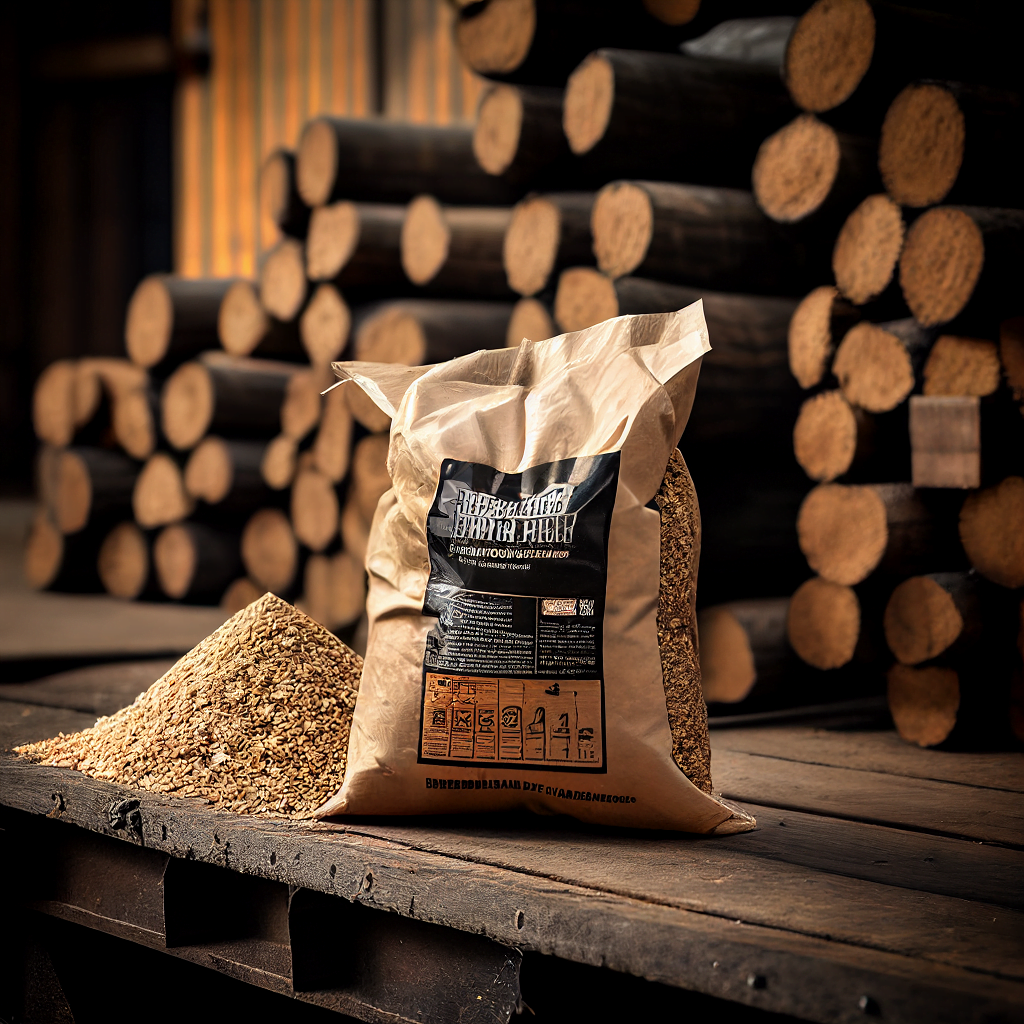When it comes to wood pellets vs firewood for heating your home, there are few crucial things to be aware of to understand the key differences between the two. There’s no denying firewood is extremely popular in Australia and for good reason. However, in Tasmania the popularity of using wood pellets for heating is growing as people get tired of messing with firewood and want an easier solution that still provides real heat. Even the die hard wood heater fans out there won’t deny there’s a lot of work involved with firewood. Below I dive into wood pellets vs firewood to help you make an informed decision on which heating option is right for you.

Now, this is a pellet heater website so it won’t come as a surprise that I recommend pellet heaters over wood heaters. However, I do understand pellet heaters aren’t for everyone. So I’ll be as impartial as I can and look at energy efficiency and environmental impact, to cost and convenience of wood pellets vs firewood. And, if you’re already a pellet heater owner, I’ll touch on a few points that you may find useful and interesting So, sit back, relax, and let’s take a look at wood pellets vs firewood and see what the pros and cons of each are for heating.
How a Pellet Heater Works
Skip to the heading below if you have already read my post on what a pellet heater is or just already know. Pellet heaters are space heaters which create heat from burning wood pellets. They are much more efficient than wood heaters because the wood pellets are burnt in a fire which is fueled with air by a fan. This fan creates a small fire with immense heat. Unlike most wood heaters, they do need electricity to run some fans, but it’s very little and about the same as a few LED light bulbs.
Wood Pellets as Fuel
So what are wood pellets? Wood pellets are small cylindrical shaped biofuels made from waste wood, which is usually sawdust, wood chips and other waste wood material typically left over from processing timber. Wood pellets are considered a renewable source of heat as recycling wood waste into heat is great but some pellet mills use plantation timber, so they aren’t cutting down old forest growth. Pellets are much more environmentally friendly producing significantly lower carbon emissions compared to traditional fossil fuels, such as firewood and because of how the pellets are made, either recycling a waste material or using plantation timber. Wood pellets come in 15kg bags, so it’s really easy to store wood pellets and transport them.
Advantages of Wood Pellets
Wood pellets are a highly efficient and eco-friendly source of heat for your home. Modern pellet heaters achieve over 90% efficiency in converting energy from the pellets into heat. What this means is that almost every dollar you spend on wood pellets for heating is converted into heat. Just for comparison, wood heaters are about 60% efficient. This means more heat is wasted in firewood than wood pellets. Being made from sustainable and renewable resources and produce fewer greenhouse gas emissions, which is great if you are looking for a green way to heat your home. Pellets are ready to burn the day you buy them, so there’s no need to split, stack and dry them before burning.
Cost and Availability of Wood Pellets
There are several wood pellet mills in Australia with three of these based in Tasmania. Due to the popularity of pellet heaters in Tasmania, you will find there is quite some difference in wood pellet prices between states. The cost of wood pellets in Tasmania as of February 2023 is around $8.50 to $12.50 a bag. Wood pellets in Australia outside of Tasmania ranges anywhere from $12.00 to $32.00. Because of this, where you live in Australia and how much you pay for wood pellets will impact the running costs of your pellet heater. In Tasmania, it’s about the same price as firewood or a little more expensive, depending on where you live in the state.
Burn Time of a 15 kg Bag of Wood Pellets
A 15 kg bag of wood pellets lasts 7 to 23 hours or so. The exact number of burn time hours you will get from a bag of pellets depends on the heating demands of your house and time of year. Naturally during winter when you are running your heater in high heat for a longer period of time you will use more pellets. During the cooler months you’ll run your pellet heater on low and use fewer pellets. Regardless, because you’ll get many hours of burn time, depending on the efficiency of the pellet heater and the heating demand of the home. Either way, you won’t be refilling very often which makes wood pellets a convenient heating option.
Firewood as Fuel
If you live in Tasmania or nearby states, then you’ve most likely owned or at least used firewood for heating. Firewood today is still extremely popular due to the lovely heat it gives off and how easily available it is. There are plenty of people with acres of trees who source their own firewood and some who cut it up and sell it. You’ll find firewood being sold on most social media sites like FaceBook and Gumtree. Comparing wood pellets with firewood the main difference is work involved as you have to chop, split, stack and dry firewood. Firewood can be a renewable energy source, but it is more labor-intensive to split, stack and dry then wood pellets.
Advantages of Firewood
If you live on acreage, then there’s a good chance you have your own firewood or can buy it locally cheap. Even outside of rural areas, firewood is still very affordable in most places. Furthermore, firewood gives off a lovely, radiant heat which is second to none. It’s why wood heaters continue to be so popular to this day. Another advantage of firewood is its aesthetic appeal. It adds a cozy and rustic touch to your home and the sight and sound of a crackling fire can be very appealing to many people. I don’t think I’ve ever heard anyone say they like sitting in front of their heat pump as it blows hot air around.
Burn Time of Firewood
Besides the manual labour required to manage firewood, the other downside is the constant refilling of wood heaters. Most modern wood heaters will make bold claims about improved burn time but the reality is if its the middle of winter and you are running your wood heater on medium or higher then you will be refilling it with firewood every few hours. The only time you’ll get good burn time is at night if you fill it full and turn the damper right down so it slowly burns over night. You’ll find that the type of firewood you burn will also dramatically impact burn time. Not all hardwoods are equal and some species perform much better than others.
Wood Pellets vs Firewood Comparison
| Feature | Wood Pellets | Firewood |
|---|---|---|
| Cost | May be more expensive than firewood, but cost per unit of heat produced is lower due to higher energy-efficiency | Usually less expensive than wood pellets, but cost per unit of heat produced is higher due to lower energy-efficiency |
| Convenience | Clean, compact, easy to store, and requires minimal preparation | Requires more effort to split, stack, dry and store, and requires more preparation and maintenance to keep fire going |
| Environment | Environmentally-friendly with fewer emissions and made from renewable resources | Less environmentally-friendly with more emissions and contributes to deforestation |
| Heat | Produces similar heat to firewood via combustion, with a natural and warm type of heat | Produces the best type of natural heat, with a cozy and rustic touch |
| Maintenance | Pellet heater and flue must be cleaned yearly to keep heater running efficiently | Flue must be cleaned yearly but wood heater only requires emptying of ash when required |
Summary of Wood Pellets vs Firewood
I think that was a fairly unbiased comparison of wood pellets vs firewood. If you enjoy splitting, stacking and drying firewood, as many people do, then a wood heater is probably best for you. However, if you are sick and tired of messing around with firewood and want to replace your wood heater, then a pellet heater and wood pellets are your best option. In addition to the lovely, natural heat from fire, there’s no need to dry pellets and they are ready to burn the day you buy them. They are easy to transport and there’s no need to keep refilling your pellet heater every two hours. Put simply, real heat without the hassle.
